Published:
Author: Antonio Maria Guerra
Maraschino Liqueur
HISTORY, INFO, PLACES, INTERESTING FACTS

Maraschino liqueur is the main ingredient of some of the most famous cocktails in the world. Its captivating flavor comes from a very particular type of cherry, the ‘marasca’ cherry. Its charm is the final result of a long history: centuries during which the name of this liqueur was associated to the Dalmatian city of Zara and to several brave and competent entrepreneurial families. Among them, the Luxardos.

The history of Maraschino liqueur.
According to legend, the recipe for rosolio Maraschino (*1) was born in a Dalmatian monastery in the 16th Century, thanks to a friar pharmacist. In truth, there is no evidence about this story. Only the place of origin is certain: the town of Zara and its surroundings, ruled in the past by the Republic of Venice and nowadays part of the state of Croatia (*2). About this, it’s important to remember that the plants of ‘marasca’, the type of cherry used for this specialty, once grew mainly in this area.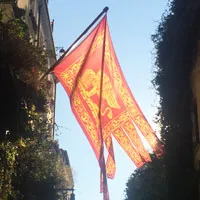 Some scholars claim that the real inventor of Maraschino was the botanist Bartolomeo Ferrari, when he realized that using the ‘marasca’ cherry (including leaf and the hazelnut), it was possible to make an exquisite alcoholic beverage. His method of production was later perfected by the Venetian Giuseppe Carceniga, who optimized the distillation process. From that moment on, the preparation of this rosolio became very fashionable in Zara (*3), the ‘city of the Maraschino’ (*4): a thousand variations of it were conceived, ‘secret recipes’, each one characterized by particular aromaticity and gradation.
Some scholars claim that the real inventor of Maraschino was the botanist Bartolomeo Ferrari, when he realized that using the ‘marasca’ cherry (including leaf and the hazelnut), it was possible to make an exquisite alcoholic beverage. His method of production was later perfected by the Venetian Giuseppe Carceniga, who optimized the distillation process. From that moment on, the preparation of this rosolio became very fashionable in Zara (*3), the ‘city of the Maraschino’ (*4): a thousand variations of it were conceived, ‘secret recipes’, each one characterized by particular aromaticity and gradation.
Many factories were built: among them, the most ancient and important were Drioli (in 1759), Luxardo (in 1821) and Vlahov (in 1861).
Notes:
*1: ‘Rosolj’ or ‘Rozolj’, from the Latin ‘ros solis’, ‘sun dew’.
*2: Today the city is known as ‘Zadar’;
*3: Many ladies enjoyed making it at home;
*4: As attested by the famous writer Honorè de Balzac in one of his works;

Maraschino Liqueur
THE MOST TRADITIONAL PRODUCER
This article is the result of collaboration between WebFoodCulture and Girolamo Luxardo S.p.A. company, the most traditional producer of Maraschino liqueur.


Maraschino liqueur: the flag and the bottle.
Over the years the Luxardo family has repeatedly shown a profound attachment to Italy.
Read more
It’s therefore not surprising that the bottle of Maraschino, the flagship product of their company, bears the colors of the flag of this country: white (on the label), red (on the capsule) and green (of glass).

Drioli, the first Maraschino liqueur.
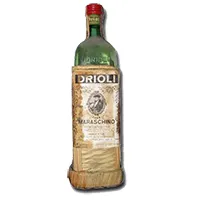 It’s not possible to describe properly Maraschino leaving out an important figure such as Francesco Drioli. Venetian diplomat (*1) and merchant (*2), he was the first to believe in the great commercial potential of this liqueur, starting its production on an industrial scale in 1759. Thanks to his business experience, he promoted his product, exporting it all across Europe through a dense network of skilled representatives. Soon he became the official supplier of many royal families, including those of Austria, England and Italy. He was also the first to use bottles with straw wrapping (initially made by the master glassmakers of Murano), the distinctive mark of Maraschino still today.
It’s not possible to describe properly Maraschino leaving out an important figure such as Francesco Drioli. Venetian diplomat (*1) and merchant (*2), he was the first to believe in the great commercial potential of this liqueur, starting its production on an industrial scale in 1759. Thanks to his business experience, he promoted his product, exporting it all across Europe through a dense network of skilled representatives. Soon he became the official supplier of many royal families, including those of Austria, England and Italy. He was also the first to use bottles with straw wrapping (initially made by the master glassmakers of Murano), the distinctive mark of Maraschino still today.
When he died, having no children, his company was entrusted to the Salghettis, the family of his wife. At the end of the Nineteenth Century, Simeone Salghetti-Drioli patented a pitting machine.
Read more
Business continued as usual until the end of the Second World War, when the factory was destroyed by Allied bombings. A new plant was built in 1947 in the village of Mira, just outside the city of Venice. Under the expert guidance of Vittorio Salghetti-Drioli, the company returned to its former glory. When Vittorio died in 1974, economic difficulties, exacerbated by the lack of a worthy successor, led to the closure of the factory (1979) and the loss of the mark (1981), putting an end to a centennial business history.
Notes:
*1: He was vice-consul, representing Spain, the Papal States and the Kingdom of the Two Sicilies.
* 2: At the time Zara and the Dalmatian region, were under the rule of the Republic of Venice.
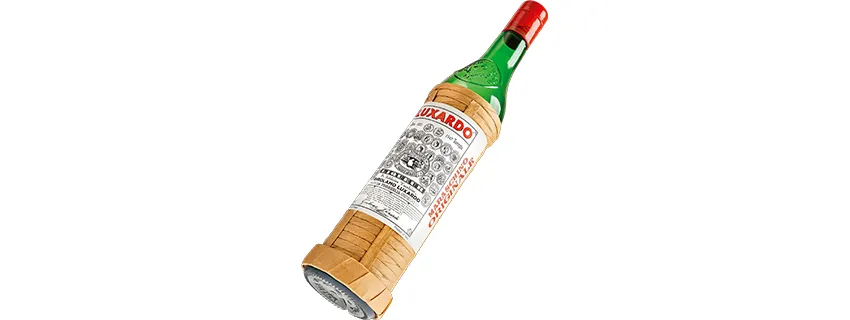
The typical bottle of Maraschino by Luxardo.
One of the elements that most characterize Maraschino is undoubtedly its packaging: a bottle with a square base and short neck.
Read more
When looking at it, what immediately catches the eye is its straw wrapping, an expedient adopted in the past by the traders of the Republic of Venice to avoid accidental damages: in time this became a distinguishing mark. Another interesting feature of the bottle is its greenish glass: it was originally produced in the Venetian island of Murano by the renowned local artisans, until it started to be made in factories built just for this purpose in the city of Zara. Finally, Maraschino by Luxardo can be also recognized for the white label showing, side by side, many of the awards acquired by the company over decades of success.

“DIFFICULTIES SHOULD BE TREATED GENTLY”
(Gabriele D’Annunzio)

How Maraschino liqueur is made.
Maraschino is prepared in ways that may slightly differ according to the producer. The main phases of the industrial process are listed below:
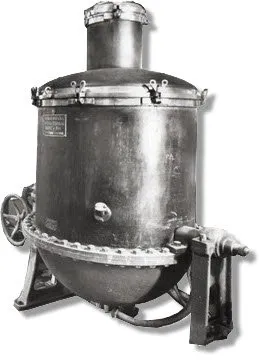 1) Fermentation: the pulp of maraschino cherries (resulting from their soft pressing), is fermented. Some companies use the whole fruit, since stones imparts almond flavor and leaves release precious herbaceous scents;
1) Fermentation: the pulp of maraschino cherries (resulting from their soft pressing), is fermented. Some companies use the whole fruit, since stones imparts almond flavor and leaves release precious herbaceous scents;
2) Pressing: the fermented fruit is pressed to extract its liquid part;
3) nfusion: the liquid part of the fermented fruit is infused with alcohol (*1) inside vats made with porous wood (often larch). An aging stage may follow;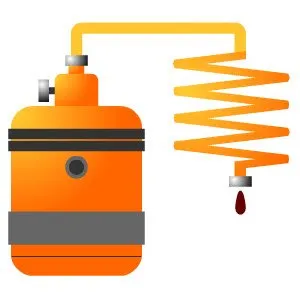 4) Distillation: this phase is carried out by discontinuous copper alembics using steam heating (*2). With this method it’s possible to discard the ‘head’ and the ‘tail’ of the infusion, its ‘unpeasant’ parts, keeping just the best, the ‘heart’ (*3);
4) Distillation: this phase is carried out by discontinuous copper alembics using steam heating (*2). With this method it’s possible to discard the ‘head’ and the ‘tail’ of the infusion, its ‘unpeasant’ parts, keeping just the best, the ‘heart’ (*3);
5) Refining: a syrup made with water and sugar is added to the distillate. This sweetens its taste and lowers its alcohol content (the desired result is 30% / 32%). The liqueur then ages for two years in Finnish ash barrels: during this period of time its taste becomes more ’round’ and pleasant.
Notes:
*1: The liqueur (or, better, ‘rosolio’) made by the Marquise Canevari ( ‘forefather’ of Luxardo Maraschino), was the result of infusion, without distillation.
*2: In the discontinuous distillation, the liquid mixture that is being distilled, once exhausted, is completely replaced, restarting the process. This method is generally used for valuable distillates.
*3: The separation of these parts from each other is a physical process, depending on their different boiling points.

‘Excelsior’ wood for Maraschino.
Maraschino is often linked to the word ‘excelsior’: this word derives from ‘fraxinus excelsior’, the type of wood used to make the barrels in which the liquor ages (*1).
Read more
Ash, having very few tannins, does not give the liqueur color and aromas, thus keeping it transparent and preserving its original flavor. At the same time, being porous, this particular wood lets the Maraschino to ‘breathe’ during its stay in the cellar.
Note:
*1: Finnish ash trees are often used: this is because their trunks, being generally longer than average, let the construction of larger capacity vats.

De Balzac, Zara and Maraschino.
Honorè De Balzac, the great French writer and playwright, mentioned Maraschino in one of his novels, ‘Un debut dans la vie’ (1842): “… it was in the city where Maraschino is produced. Zara. I was there. It’s on the coast … “.

The Maraschino cherries.
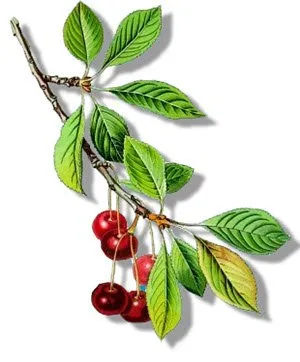 ‘Maraschino’ is a sweet and transparent liqueur, produced using a particular type of cherry, the ‘marasca’, fruit of the ‘prunus cerasus’ (*1): this differs from the ‘sweet’ cherry, fruit of the ‘prunus avium’, for a slightly smaller size, a lighter color and a more acid and bitter taste. Its content of vitamin A, C and flavonoids is quite high. Until the middle part of the Twentieth Century, the best marasks were gathered in the Dalmatian territories surrounding the city of Zara (today’s ‘Zadar’): it was the Luxardo family who understood first that the Euganean Hills (located in Italy, not far from Padua ), could represent a more than valid alternative (*2), starting what would become one of the main maraschets in Europe.
‘Maraschino’ is a sweet and transparent liqueur, produced using a particular type of cherry, the ‘marasca’, fruit of the ‘prunus cerasus’ (*1): this differs from the ‘sweet’ cherry, fruit of the ‘prunus avium’, for a slightly smaller size, a lighter color and a more acid and bitter taste. Its content of vitamin A, C and flavonoids is quite high. Until the middle part of the Twentieth Century, the best marasks were gathered in the Dalmatian territories surrounding the city of Zara (today’s ‘Zadar’): it was the Luxardo family who understood first that the Euganean Hills (located in Italy, not far from Padua ), could represent a more than valid alternative (*2), starting what would become one of the main maraschets in Europe.
Notes:
*1: Many scholars suggest that this plant could be from Asia Minor. Black cherries and sour cherries are gathered from other varieties of the ‘cerasus’.
*2: Choice facilitated by the precious help of the famous agronomist Alessandro Morettini of the University of Florence (More info).

Where the name 'Maraschino' comes from?
The name ‘Maraschino’ derives from that of the particular type of cherry used to make this liqueur, the ‘marasca’ (or ‘amarasca’): its name, in turn, derives from the Latin word ‘amarus’, whose meaning is ‘bitter’.

Luxardo’s factory in Torreglia.
Luxardo’s factory is in Torreglia, a small town located on the slopes of the Euganean Hills, not far from the city of Padua, in the Italian region of Veneto.

The Luxardos and Maraschino liqueur.
The history of the Luxardos is closely associated to the product that makes them famous worldwide: the Maraschino. A history rich in fascinating events, in many ways similar to a romance.
The first generation: Girolamo Luxardo.
It all began in 1817, when Girolamo Luxardo (*1), entrepreneur of noble origins, moved with his family from Liguria (Region of Italy) 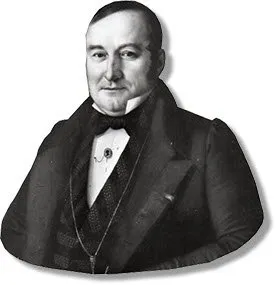 Liguria to Zara, city that at the time, although in great part populated by Italian-speaking people, was under the control of the Austro-Hungarian Empire (*2). Tradition has it that his wife, the Marquise Maria Canevari, enjoyed very much making at home a typical Dalmatian liqueur, the Maraschino rosolio, using her own ‘secret’ recipe (*3). This liqueur, offered to friends, was so successful as to encourage Girolamo to start up a company in 1821 (*4). For the sake of completeness, it should be said that, most likely, his interest in this rosolio was probably antecedent: his meetings with the famous producer Giacomo Balletti would prove it. During the following years, the recipe of the Marchesa was further improved until, in 1829, the great quality of the Maraschino Luxardo was certified with a ‘privilege’ awarded by the Emperor of Austria (*5). It’s important to remember, in addition to this refined liqueur, other spirits were produced and successfully exported to many countries.
Liguria to Zara, city that at the time, although in great part populated by Italian-speaking people, was under the control of the Austro-Hungarian Empire (*2). Tradition has it that his wife, the Marquise Maria Canevari, enjoyed very much making at home a typical Dalmatian liqueur, the Maraschino rosolio, using her own ‘secret’ recipe (*3). This liqueur, offered to friends, was so successful as to encourage Girolamo to start up a company in 1821 (*4). For the sake of completeness, it should be said that, most likely, his interest in this rosolio was probably antecedent: his meetings with the famous producer Giacomo Balletti would prove it. During the following years, the recipe of the Marchesa was further improved until, in 1829, the great quality of the Maraschino Luxardo was certified with a ‘privilege’ awarded by the Emperor of Austria (*5). It’s important to remember, in addition to this refined liqueur, other spirits were produced and successfully exported to many countries.
Read more
Michelangelo and the new factory.
Luxardo business continued to grow under the guidance of Nicolò (second generation) and his sons Demetrio and Michelangelo (third generation): Maraschino received many awards all over the world, significantly increasing its sales.
This increase in demand led to the construction of a new, modern factory (*6), inaugurated in 1913.
World Wars, success and decline.
The years of the Great War caused a sudden setback in the apparently unstoppable growth of Luxardo: these difficulties were however brilliantly overcome by the fourth generation of family members. Nicolò 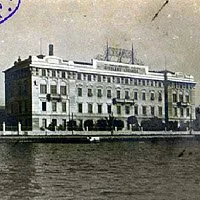 , Demetrio, Pietro and Giorgio made the company one of the most famous in Italy (*7). The peak of its success was reached in 1939, just before the beginning of the new conflict: at that time Luxardo could count on hundreds of workers, flourishing cherry plantations and exports all over the world. Unfortunately, the Second World War dealt a potentially fatal blow: in addition to the sharp decline in business (however physiological), in 1943 the plant was almost completely destroyed by Allied bombings and many family members were killed in summary executions carried out by the partisans of Tito. Executions intended to eradicate the Italian presence from Dalmatia.
, Demetrio, Pietro and Giorgio made the company one of the most famous in Italy (*7). The peak of its success was reached in 1939, just before the beginning of the new conflict: at that time Luxardo could count on hundreds of workers, flourishing cherry plantations and exports all over the world. Unfortunately, the Second World War dealt a potentially fatal blow: in addition to the sharp decline in business (however physiological), in 1943 the plant was almost completely destroyed by Allied bombings and many family members were killed in summary executions carried out by the partisans of Tito. Executions intended to eradicate the Italian presence from Dalmatia.
The rebirth.
What happened in Zara seemed to have definitively put an end to the entrepreneurial adventure begun more than a century earlier by Girolamo, but it did not. One of the brothers, Giorgio, luckily escaped the slaughter (*8) and the destruction. With great courage and the help of the young Nicolò (Nicolò the third, fifth-generation) (* 9), he restarted the family business in the village of Torreglia, at the foot of the Euganean Hills, not far from the city of Padua.
Last survivor among all the main competitors, Luxardo nowadays is still entirely controlled by the sixth generation and is without doubts the oldest factory of Maraschino still in business, representing a centuries-old tradition.
Notes:
*1: Girolamo was born in 1784 in Santa Maria Ligure (Liguria).
*2: It’s important to remember that these territories previously belonged to the Republic of Venice.
*3: It was slightly sweeter than the ‘official’ one.
*4: Girolamo became so important to be appointed vice-consul by the King of Sardinia.
*5: Since then Luxardo Company got the name ‘Privilegiata Fabbrica Maraschino Excelsior’.
*6: The famous ‘Palazzo del Barcagno’, overlooking still today the Zadar promenade, was part of the factory.
*7: After the First World War, Zara was surrendered by the dissolved Austro-Hungarian Empire to the Kingdom of Italy.
*8: He was in Bologna (Italy).
*9: Michele and Franco Luxardo belong to the same generation.

Maraschino liqueur in the world.
Maraschino, since the beginning of its industrial-scale production (in the Mid-Eighteenth Century), was exported to most European countries.
Read more
There is evidence that it started to be commercialized in the United States as early as the second half of the 19th Century. Initially this specialty, due to its high price, could be afforded only by aristocrats and wealthy people.

Maraschino liqueur on the Titanic.
Such was the fame of the Maraschino in the early 1900s to be served in the luxurious halls of the famous RMS Titanic, during his first (and last) voyage. It’s fascinating to think that a bottle of this liqueur could still be found in the wreck of the ship, lying on the seabed, thousands of meters underwater.

Maraschino: a liqueur loved by kings and queens.
Many European Kings and Queens (*1) of the past have much appreciated the taste of Maraschino. Here follow some illustrious examples:
Read more

Louis XVIII (1755-1824)
Louis XVIII of France was the younger brother of the famous Louis XVI, the king guillotined during the French Revolution. He ascended the throne after the definitive defeat of Napoleon. The transition from absolute to constitutional monarchy meant that, compared to the past, he could exercise limited power. (more info)

George IV (1762-1830)
George IV of Hannover is often remembered as an unusual monarch, considered by many even extravagant. He was a great lover of arts and mundane life. What most characterized the years in which he was entrusted with the regency (in place of his father, George III), was the definitive defeat of Napoleon. (more info)

Louis Philippe I (1773-1850)
Louis Philippe, Duke of Orléans, became King of the French in 1830 as Louis Philippe I. He was the last sovereign of France from the Bourbon family. It’s important to remember that he was also the last king: the monarch who succeeded him, Napoleon III, assumed in fact the title of emperor. (more info)

Nicholas I (1796-1855)
Nicholas I Romanov became emperor (Tsar) of Russia in 1825. During his reign, the empire reached its maximum territorial extent. His leadership was extremely authoritarian. He was also considered by many the ‘policeman’ of Europe, ready to suffocate any liberal revolution. (more info)

Queen Victoria (1819-1901)
Victoria became Queen of the United Kingdom of Great Britain and Ireland in 1837: her reign characterized a period that is still today known as the ‘Victorian era’. Although she had limited power (she was a parliamentary monarch), her influence on the fate of the country was extremely important. (more info)

George V (1865-1936)
George Frederick Ernest Albert, nephew of Queen Victoria, ascended the throne of Great Britain in 1910. He was the king who led the country during the First World War: he found himself in a difficult position since Kaiser Wilhelm II, commander of the enemy forces, was his first cousin. (more info)
It is said that a lot of famous people loved Maraschino: people like Giacomo Casanova, the great Venetian seducer, the poet Charles Baudelaire and the director Alfred Hitchcock.
Notes:
*1: A purchase note, signed by Auguste de Marmont, Marshal of France and Napoleon’s aide-de-camp, could prove that also the French Emperor enjoyed Maraschino.

Cherries for the Roman general.
Some scholars hypothesize that the cherry tree was first introduced in Italy by the Roman general and aristocrat Lucius Licinius Lucullus, returning from a military campaign in Pontus (today’s Turkey).
Read more
A credible thesis, especially considering the great love of this personality for delicious food: in fact, it’s no coincidence that even today the most refined and abundant meals are defined ‘lucullan’.

Drinks made with Maraschino liqueur.
The taste of Maraschino, perfectly enjoyable ‘straight’, gives its best in cocktails. Some are very famous, among them it’s important to remember:
Cocktail ‘Martinez’ (1860 ca.) The cocktail that many consider the ‘father’ of the ‘Martini’, started to be served at the Occidental Hotel in San Francisco during the second half of the Nineteenth Century. It’s accurately described in the ‘Bar-Tender’s Guide’ by Jerry Thomas. In addition to maraschino, its main ingredients are: Boker’s (Angostura) Bitters, Old Tom Gin and Italian sweet Vermouth. It’s usually garnished with lemon or orange peel.
The cocktail that many consider the ‘father’ of the ‘Martini’, started to be served at the Occidental Hotel in San Francisco during the second half of the Nineteenth Century. It’s accurately described in the ‘Bar-Tender’s Guide’ by Jerry Thomas. In addition to maraschino, its main ingredients are: Boker’s (Angostura) Bitters, Old Tom Gin and Italian sweet Vermouth. It’s usually garnished with lemon or orange peel.
Read more
Cocktail ‘Aviation’ (1916)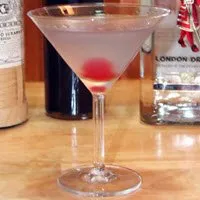 Invented in the early years of the 20th century by the bartender Hugo Ensslin at the Hotel Wallick in New York, it’s described in his guide ‘Recipes for Mixed Drinks’ (1916).
Invented in the early years of the 20th century by the bartender Hugo Ensslin at the Hotel Wallick in New York, it’s described in his guide ‘Recipes for Mixed Drinks’ (1916).
In addition to maraschino, its main ingredients are: gin, ‘Crème de violette’ (liqueur giving the cocktail its typical purple color) and lemon juice.
Cocktail ‘The Last Word’ (’20s)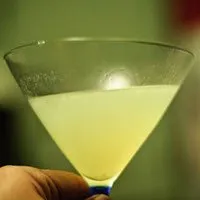 Cocktail invented at the Detroit Athletic Club, private club in Detroit (USA), during the years of alcohol Prohibition. In addition to the maraschino, its main ingredients are: gin, ‘Chartreuse’ and lemon juice.
Cocktail invented at the Detroit Athletic Club, private club in Detroit (USA), during the years of alcohol Prohibition. In addition to the maraschino, its main ingredients are: gin, ‘Chartreuse’ and lemon juice.
Cocktail ‘Hemingway Special’ (’40s)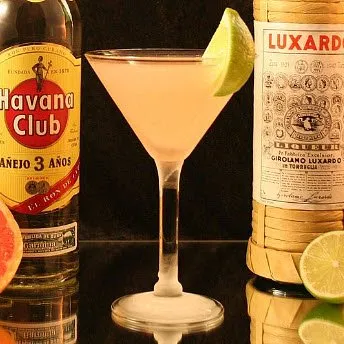 ‘Hemingway Special’ is the evolution of one of the favorite drinks of the famous writer Hernest Hemingway: the ‘Floridita Daiquiri’ (tipical specialty of the celebrated bar / restaurant ‘Floridita’ located in Havana, Cuba). In addition to maraschino, its main ingredients are: rum, grapefruit juice and lime juice.
‘Hemingway Special’ is the evolution of one of the favorite drinks of the famous writer Hernest Hemingway: the ‘Floridita Daiquiri’ (tipical specialty of the celebrated bar / restaurant ‘Floridita’ located in Havana, Cuba). In addition to maraschino, its main ingredients are: rum, grapefruit juice and lime juice.

Address:Via Romana 42
35038 Torreglia (PD)
Website: www.luxardo.it
Mail: info@luxardo.it
Tel.: +39 049 9934811
fax: +39 049 9933070
Copyright information.
The images displayed in this page belong to WebFoodCulture and to Luxardo S.p.a. (courtesy of), with the exception of:
Public Domain images
- Gabriele D’Annunzio, 1904, unknown author (Wikipedia Link) {PD-US}
- Bottle of Maraschino Drioli, 2008, photo by Creek, released in public domain.
- Honorè De Balzac, 1850, image by Nadar (Wikipedia Link) {PD-US}
- World map, 1689, Gerard van Schagen (Wikipedia Link) {PD-Art} {PD-US}
- Cocktail Aviation, 2009, photo by Bskinner112.
Creative Commons images
- Cocktail ‘The Last Word’, photo by Don LaVange (Wikipedia Link)
- Martinez Cocktail, photo by Will Shenton (Wikipedia Link)
- Hemingway Special, photo by Achim Schleuning (Wikipedia Link)
